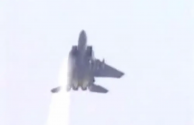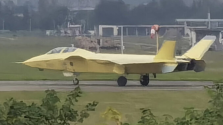yes.A comment from that link:
during Zhuhai Air show 2022. they have confirmed about 100 percent localization in Military aviation industry include aviation software
WS-15 is a game changer engine. advance variant coming too
yes.A comment from that link:
Hopefully this isn't off-topic... Not meant as a comparison, but a baseline reference
On the topic of upgrades.
The F-22, early production F-35, Tranche 1 Typhoon are all considered "un-upgradeable".
As I understand it, this is more of a cost issue than a technical one right?
Might the J-20 vs. J-20A actually have more technical issues (or at least create more of a two-track program) due to the engine difference?
Now that WS-15 is out, where is the new article on the Diplomat?
Now that WS-15 is out, where is the new article on the Diplomat?
Thanks, could you provide some more info about what was talked about?Yankee and Shilao did a video last night on the new J-20A, covering lots of the same ground as Yankee's article but had also some new info on J-20 and WS-15 development history:
Member only:
Alternative:
One amusing thing that Yankee revealed was there were multiple engine plans for J-20 maiden flight, including a plan to pick out 2 of the best engines out of hundreds of WS-10 produced (ala how they use to pick the best out of 1000 bolt action rifles in WW2 for mounting scopes to turn into dedicated sniper rifle) at that point and fit them to the J-20 prototype so that it could be claimed it was both a domestic fighter and domestic engines. It was quickly concluded while this would be possible it wouldn't make sense because you can't get the same quality engines for the other prototypes and LRIP planes.
It's 2+ hours and very information dense...Thanks, could you provide some more info about what was talked about?

It's 2+ hours and very information dense...

is this referring to the time an Israeli F-15 landed on a single wing in 1983?It's 2+ hours and very information dense...
One thing that stuck with me was Yankee saying even though J-8 was a domestic designed plane it's still very much in the Soviet mind frame. Even if designers are aware of western aircraft design standards they don't grok it when designing and just continue to go with what they are familiar with. What really made a big impression was this event:
View attachment 115450
Designers were like wow, that's a really robust plane. No Soviet plane can survive that sort of damage and come back, we're going to want that.
France actually was of great help in helping China to adapt to western aircraft designing standards when Dassault sold some software to China, they were very good and some of which are still in use even today.
The other big event that helped China was the AWAC deal with Israel. Although the deal eventually fell through due to US pressure a lot of western aircraft design knowledge was gained in the process.
Yes that one.is this referring to the time an Israeli F-15 landed on a single wing in 1983?
